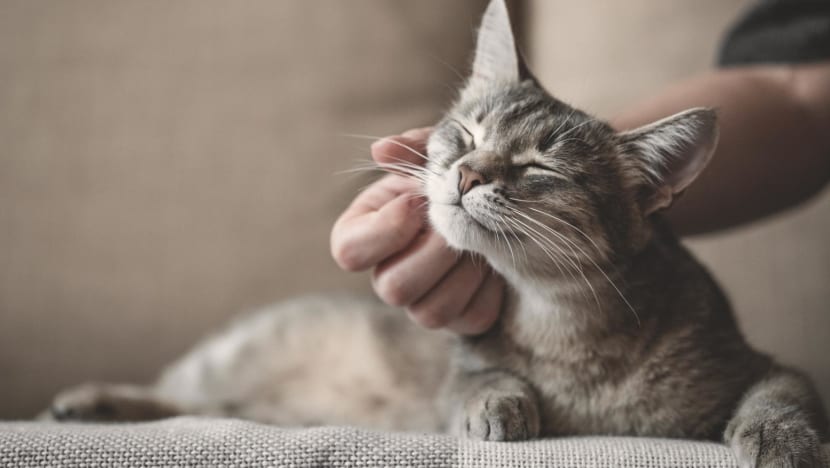Cat licensing rules to start on Sep 1, with two-year transition period for owners to adapt
It will be compulsory to microchip and get licences for pet cats.

Licensing for pet cats will be available via AVS’ Pet Animal Licensing System (PALS) from September. (Photo: iStock)

This audio is generated by an AI tool.
SINGAPORE: A new framework allowing those living in Housing Board flats to keep up to two cats will kick in on Sep 1, marking the start of a two-year transition period.
During this time, existing owners must adapt to the new requirements, including mandatory licensing and microchipping.
The framework will allow up to two cats in HDB flats. The limit for private residences is up to three cats or dogs, or a combination of both.
“Those with more cats than the limits for HDB flats and private premises will be allowed to keep all their existing pet cats if they license them within this transition period and are able to ensure that the cats’ health and welfare are taken care of,” said the Animal and Veterinary Service (AVS) on Saturday (May 11).
Licensing will be available via AVS’ Pet Animal Licensing System (PALS) from September. It will be free during the transition period, which runs until Aug 31, 2026.
It will be an offence to keep unlicensed pet cats from Sep 1, 2026 onwards.
After the two-year transition period, a one-year licence for a sterilised cat will cost S$15 while the same licence for an unsterilised one will be S$90. These fees follow the current cost of licensing dogs.
To apply for a licence, cat owners must first ensure that their felines are microchipped. All first-time cat owners will also need to complete a one-time free online pet ownership course.
Licence fees for pet cats after transition period
| Category | One-year licence | Two-year licence | Three-year licence | One-time licence |
| Cats below five months of age | S$15 per cat | N/A | N/A | N/A |
| First three cats |
Sterilised: Unsterilised: |
Sterilised: Unsterilised: |
S$230 per unsterilised cat |
S$35 per sterilised cat |
|
Fourth and subsequent cat |
S$180 per cat | S$325 per cat | S$460 per unsterilised cat |
S$460 per sterilised cat |
Cat owners are additionally required to ensure that their pets are kept in a safe environment and take reasonable steps to protect them from hazards. This includes installing mesh, grilles, screens or other barriers to prevent the cats from roaming or falling from height.
When in public, cat owners will also need to ensure that their cats are kept under physical control. For example, owners can use a harness or place their cat in a carrier to prevent it from roaming freely.
PET CAT STERILISATION SUPPORT PROGRAMME
Low-income households can get support from AVS via its Pet Cat Sterilisation Support (PCSS) programme, which will offer free sterilisation and microchipping.
“By doing so, the programme aims to stem the unintended breeding of pet cats belonging to households that are unable to afford sterilisation, by facilitating early intervention. It also seeks to address downstream animal welfare issues and disamenities arising from the overpopulation of pet cats,” said AVS.
More details on eligibility criteria and the registration process will be available from Sep 1.
Cat fosterers will also be given support during the transition period. They will be able to apply to license their existing fostered cats through AVS’ Pet Animal Licensing System as long as they are able to ensure that the cats’ health and welfare are taken care of.
AVS said it recognises that fosterers play an important role in cat management.
“AVS will co-develop guidelines for cat fosterers together with HDB and animal welfare group partners and look into how responsible fosterers that meet these guidelines can be allowed to keep more cats. AVS will adopt a phased approach for this and will share more details when ready,” it added.
The Cat Welfare Society welcomed the cat management framework.
“CWS is glad to see that the proposed licensing conditions largely accord with the responsible cat ownership guidelines that we have set out and pushed for. We are glad to see our work raise the minimum standards of care for pet cats in Singapore,” it said in an Instagram post.
It added that the measures set a standardised level of care and sets clear expectations on what responsible cat ownership is.
Related:
COMMUNITY CATS
The Trap-Neuter-Rehome/Release-Manage (TNRM) programme for free-roaming dogs will also be extended to community cats on Sep 1.
This replaces and builds on the current Stray Cat Sterilisation Programme under which AVS has been subsidising the sterilisation and microchipping of community cats since 2011.
Under the TNRM programme for cats, AVS will enhance funding support for the sterilisation and microchipping of community cats and fund additional components, such as the trapping and boarding of community cats.
“Sterilised cats will be rehomed where possible, while the remaining cats will be released back into the community, where they can continue to be responsibly cared for by community cat caregivers,” said AVS.
PUBLIC CONSULTATION
The rollout of the finalised framework comes after extensive public consultation with multiple stakeholders, said AVS.
It started with a two-month public survey launched in September 2022, which garnered more than 30,000 responses, Findings showed that overall, respondents were strongly supportive of AVS’ proposed approach to cat management.
This was followed by focus group discussions with more than 100 cat owners, non-cat owners, community cat caregivers, veterinarians, animal welfare groups and other stakeholders in 2023.
A second two-month public survey calling for feedback on the details of the proposed Cat Management Framework was launched last December.
This included the mandatory licensing of pet cats and the proposed number limits within HDB flats and private premises. Similar to the first survey in 2022, findings from the second survey showed that the public was overall supportive of the proposed measures, said AVS.


















